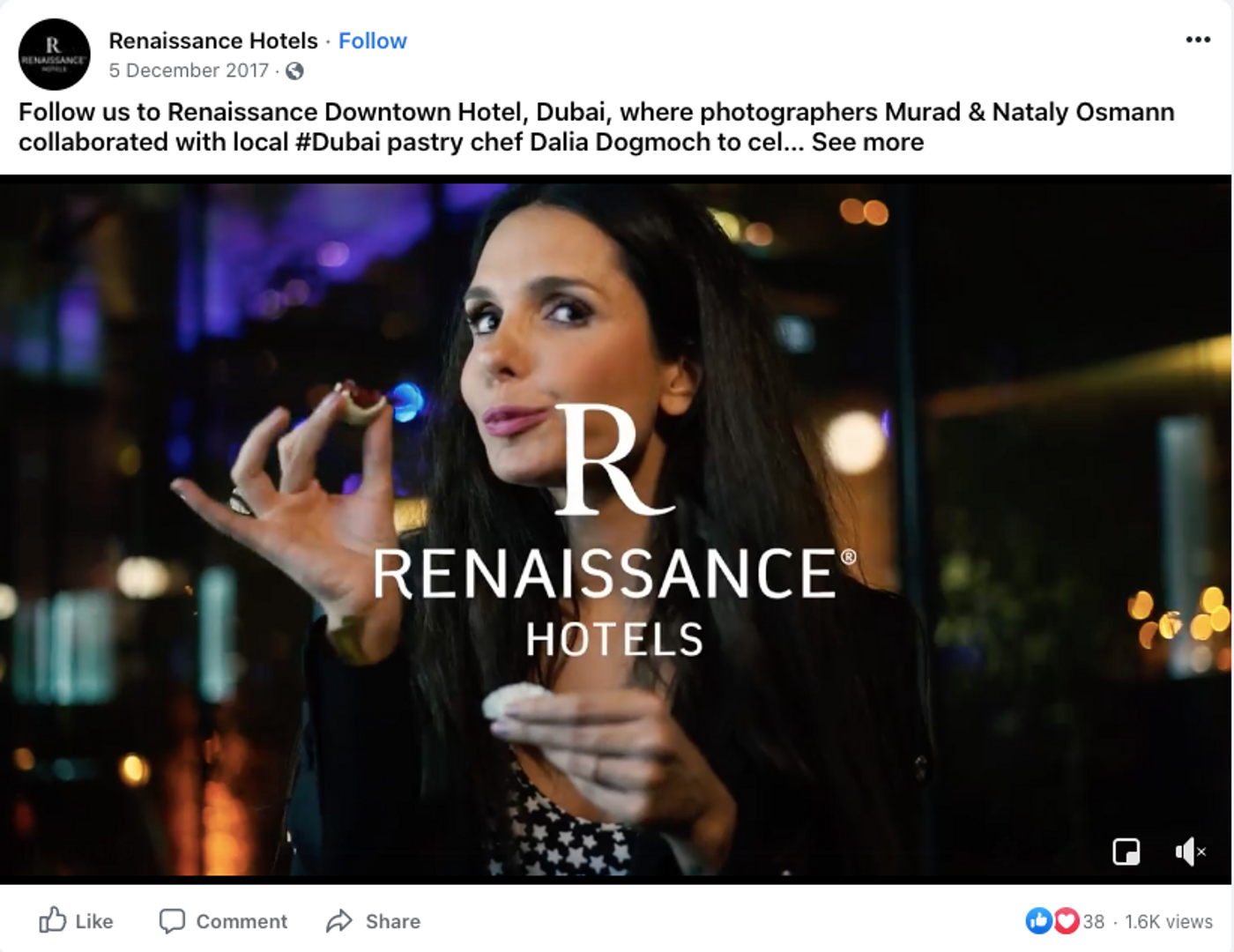Here’s your list of travel marketing trends you cannot ignore in 2025. If you want to:
- Fight the stiff competition and low ROI in your industry
- Pivot your travel marketing strategy despite the pandemic
- Capture more bookings when travel resumes full speed
Then this list will be really helpful. You also get a glimpse of travel marketing ideas by brands that you can learn from. Let’s dive in.
12 Travel Marketing Trends in 2025
1. Virtual Reality Experiences
Ideally, the best virtual experience requires a VR headset, but today we also have 360-degree and panorama videos that can provide a virtual experience. This is an increasingly popular form of travel marketing, used by various sectors of the industry. For instance, hotels use VR tours to showcase their hotel rooms, while travel agents offer VR videos of tourist attractions. For example, check out this VR tour of the Conrad Koh Samui resort.
Want to know how you can create your own VR videos? Check out this video below.
Pro-tip: Once you’ve created your video, you can easily edit it using InVideo’s online video editor
2. TikTok Marketing
With over 2 billion downloads and over 1 billion monthly active users, TikTok is the latest social media platform marketers need to look at. Travel marketers have a unique opportunity to stand out on TikTok with travel-related videos, something many people are desperately craving more of right now since they may not be able to go anywhere themselves. TikTok video tours and video stories have the potential to go viral. You can even repurpose your Instagram reel videos on TikTok!

For example, Trip Hacks DC, a firm that provides guided tours of Washington DC, actually saw phenomenal success using TikTok. They posted 1 video daily on TikTok in December 2020. They gained 738,551 video views, 3,511 new followers, 92,300 likes and 6,572 profile views. Check out their best performing video (with 320K views) below:
Check out this article by Trip Hacks DC founder Rob on his learnings. Meanwhile, here are a few TikTok video tips to help you get started on your TikTok travel marketing journey:
Tip #1 - Use relevant TikTok hashtags the same way you would on Instagram to show up for those using the search feature.
Tip #2 - Add your location to your profile because geo-location is a factor in the TikTok algorithm. This is especially helpful for travel businesses as it means your geo-tagged post will show up in relevant searches and help you get more views.
Tip #3 - There are 2 types of videos you may find on TikTok - trending videos and original content. You make trending content by copying an existing video concept and putting your own twist on it. Trending content usually revolves around a specific piece of music or audio. For example, a popular trending video in 2020 involved people hopping to the beat of the Black-Eyed Peas song “Where is the Love” with a funny caption about how they were “on my way” somewhere.
Wondering how you can find out the top TikTok trends for 2025 that you can mirror for your brand? Check out this list of 5 trending video ideas for any business.
Tip #4 - Rob from Trip Hacks DC found that his best performing TikTok videos included all original content - a video he made with a tip to stand near the Washington Monument for magnificent city views (320K views). Other high-performing videos were about Florida House (149K views) and a lesser-known FDR monument (66K views). Meanwhile, the trending videos he made garnered very few views comparatively.
Tip #5 - The above point is interesting because it suggests that viewers want to see locations and places in a new way, from different perspectives. Travel businesses can create TikTok tours that give a sneak peek of what the travel experience will be like, keeping this insight in mind. For example, check out this compilation of TikTok videos on YouTube that show a vlogger traveling to different locations - his concept revolves around shooting his feet on unfamiliar terrain.
3. Facebook Ads can be your best bet!
In 2020, a few travel operators braved Facebook Advertising despite the pandemic. They ended up seeing astounding results, generating six figures in revenue for bookings with less than $1000 ad spend. This might have required careful planning and testing of different combinations. But these travel marketers found interesting new target users and audiences.
For example, Morgan Cantrall, the founder of History Well Travelled, a walking tour operation in Georgia, discovered that their Facebook ads got the most engagement from older generations! Who knew Facebook Ads was one of the hottest senior citizen tourism trends?! Check out some of Morgan’s learnings here.
With 2 billion monthly active users and hundreds of targeting and retargeting options, Facebook ads can give you genuine ROI and provide massive reach.
Want to learn more about how you can get started with Facebook advertising in 2025? Check out this step-by-step tutorial that will help you create and set up your first Facebook ad.

4. Remarketing
Even though brands spend big bucks on marketing, according to a Think with Google study, only 14% of leisure travelers always book with the first airline that comes to mind when they start their research. Even worse, that number drops to 10% when we look at the first hotel brand that came to mind during their research. Essentially, this means that you need to keep reminding your consumers of your brand presence throughout their consideration process, before they book a flight or a hotel room or any other service.
The best way to ensure your brand remains top of mind for travel planners is to leverage the power of remarketing.
For instance, maybe they started to book a hotel room, or looked at flights and then stopped midway. As a travel marketer, this is a unique lead you can reach out to through remarketing, mainly because you know exactly what they are looking for. For example, check out the Facebook ad below. They targeted this to customers who already checked out hotel prices on Expedia.com, but did not make a booking. The ad subtly nudges customers to come back to Expedia.com and look for a relevant hotel while promoting the Aava Whistler Hotel.

You can tailor the actual content you target individuals with to show them the exact product they were viewing for maximum relevance. Remarketing enables you to push the services and products that your consumers need. It can be carried out primarily using Google AdWords and Facebook ads. Check out this guide to remarketing to learn how you can use it for your business.
5. Review Marketing
For the travel and tourism sector, customers turn to review marketing for deals, discounts and making decisions. Websites and services like TripAdvisor, Hotel.com, Kayak.com, and more provide reviews for hotels, airlines, tours, and services. If reviews are a part of your travel marketing strategy, they are likely to give you stellar results. Check out this search result for hotels in Michigan - the top few names are ones that have great reviews on Google.
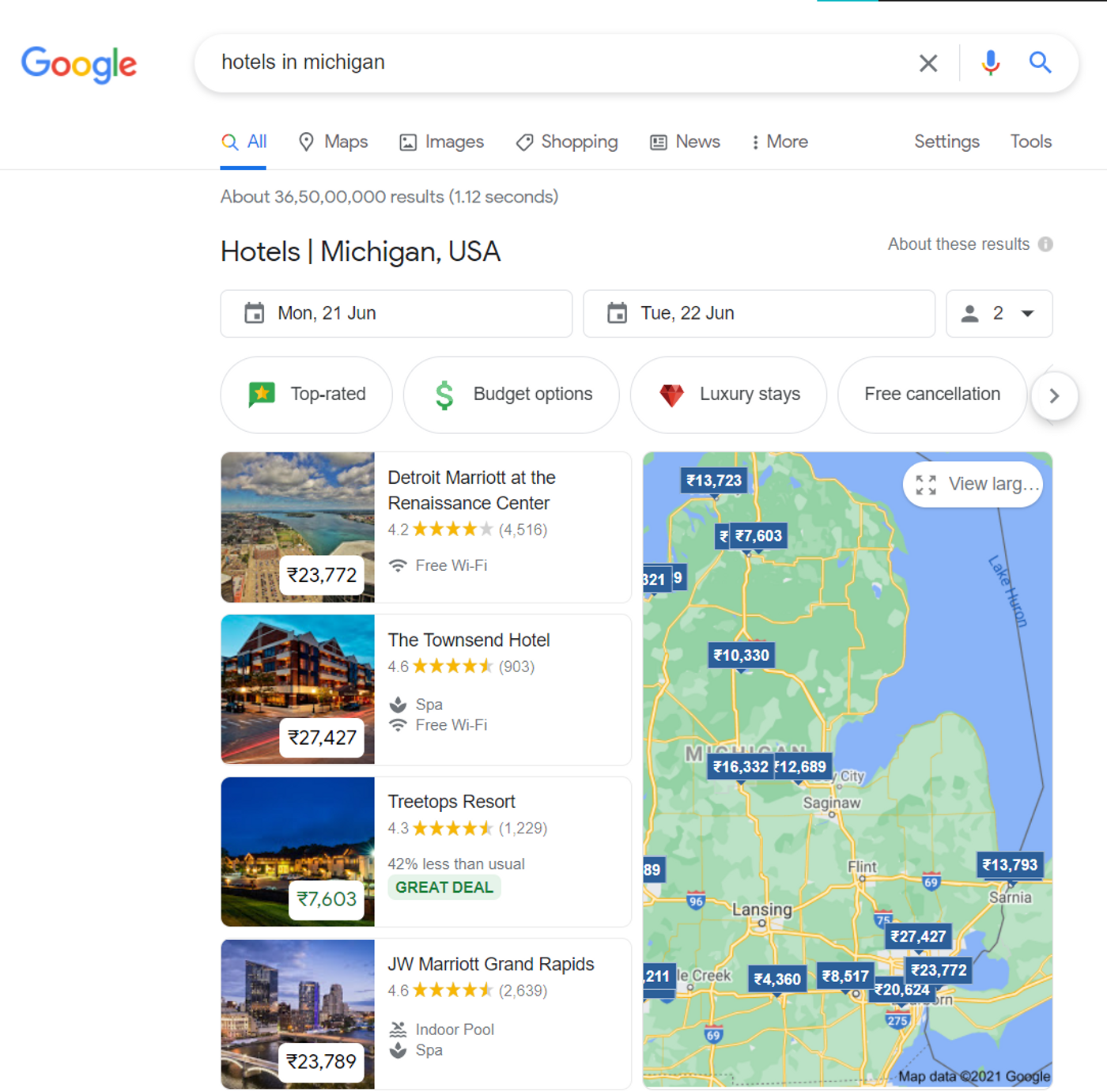
As a travel marketer, you need to make sure that your profiles on platforms like Google, TripAdvisor, Kayak, et al., are well maintained with accurate images, and descriptions as well as prices. You also need enough reviews to mitigate any negative ones. The main travel marketing tips in this area are to encourage customers to leave reviews through email requests, and to take the time to update information and photos on each review platform.
6. User Generated Content
User-generated content includes videos created by users, images uploaded to social media platforms, and comments on blog posts. You can factor in user-generated content as a part of your travel marketing strategy to build brand loyalty and authenticity.
A restaurant can encourage customers to upload images to their website, while hotels or attractions can provide a digital photo booth at their location, which automatically adds the company or relevant hashtag to every photo. Brands can also hold contests on social media to create user-generated content.
For example, as part of their For the Love of Mesa contest, Visit Mesa asked people to create content describing what Mesa (a city in Arizona, USA) meant to them. They then featured the best photos and videos in a music video, “For the Love of Mesa”. Check it out here:
Hashtag campaigns are also a great way to create user generated content while subtly promoting your products and services. For example, Cathay Pacific created #lifewelltravelled in 2015 to align it with their global advertising campaign. The hashtag took a life of its own though with constant involvement from travel blogger Jessica Stein. Today the hashtag is still in use and pretty popular with 2,900,532 posts on Instagram.
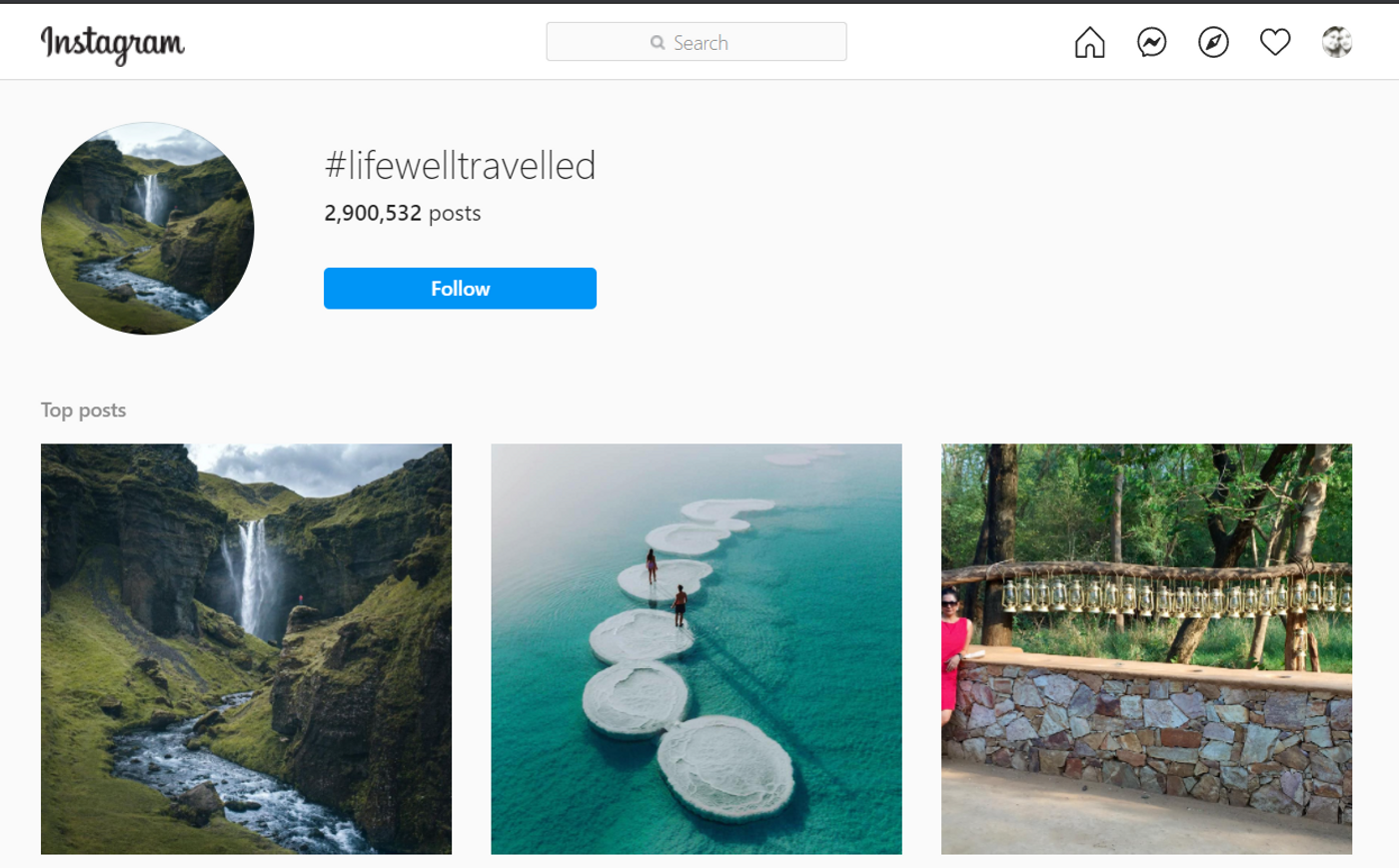
Check out how you can use hashtags to improve your business in this article.
7. Influencer Marketing
Influencer marketing involves influencers and influencer marketing agencies endorsing a product or a service to their existing following on social media sites like Instagram and YouTube. Since the audience trusts them, they are more likely to trust the marketing content influencers share.
Images and videos are ideal for this, as it allows the influencer’s audience to see their travel experience. Businesses may reach out to influencers that have a following from a specific demographic, in order to target them. For example, check out travel influencer Murad Osmann’s video collaboration with the Renaissance Hotels chain.
8. Augmented Reality
AR or augmented reality differs slightly from virtual reality. It involves the use of apps and overlays to show an object in a particular space. Travel companies can use this to enhance real-world settings.
For instance, a review app might display customer reviews for a restaurant when a phone is pointed at the building. Some hotels have also innovatively used AR, providing wall maps within rooms and a companion app, which overlays additional information onto the map. For example, check out this AR Travel Guide to the city of Florence, Italy.
9. Artificial Intelligence
More and more travel marketing plans include some or the other application of AI or artificial intelligence. Customer service is one of the biggest areas where businesses compete, and the use of AI-powered chatbots can significantly improve response times and offer 24/7 service, even when staff are not available.
From recommended flights to intelligent online travel assistants, tailored offers for loyal customers and dynamic pricing, AI is used extensively. For example, Expedia.com, an online travel agency, uses the Facebook messenger chatbot to help you find hotels when travelling. The bot (image below) asks you various questions about your journey and then selects the top 5 hotels that suit your criteria to make it easy to look for accommodation.
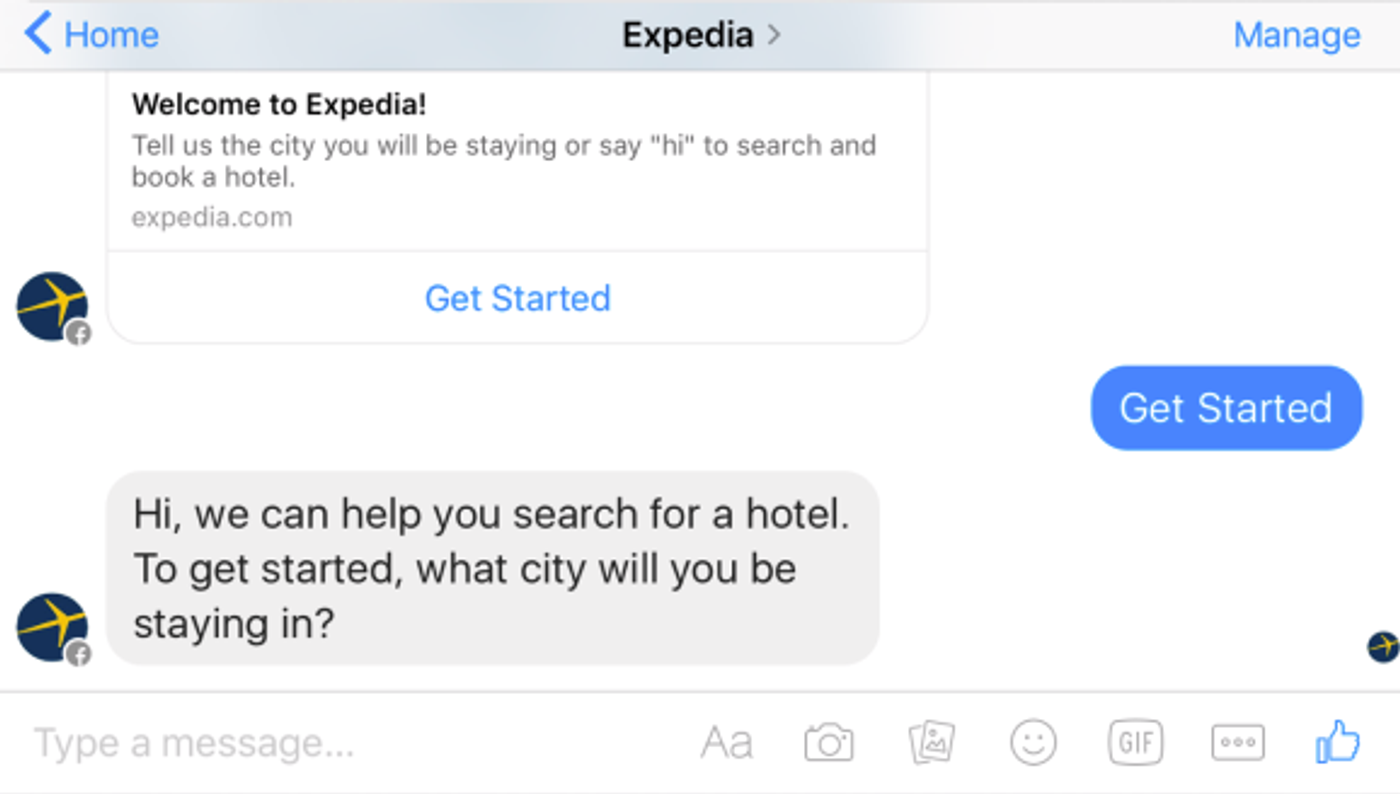
10. Customer Experience Marketing
To stand out among the competition, your brand and business need to create and deliver customer-centric experiences and campaigns as it gives your target audience an interesting reason to stay and become repeat customers. You also must create an emotional connection between your brand and customers, putting them at the center of your travel marketing strategy.
Most believe that the highest form of customer experience would be personalised to each consumer. One example of personalisation is the use of data aggregating softwares. For example, The Mandarin Oriental Hotel Group has appointed SevenRooms as their global reservation, table management and guest engagement platform software.
SevenRooms is a software platform that captures data right from the start of the guest’s journey.
This software helps Mandarin Oriental teams to understand their guests’ needs and personalise their services accordingly. They can track guest data from reservation to check-in to meal orders and preferences (see image below).
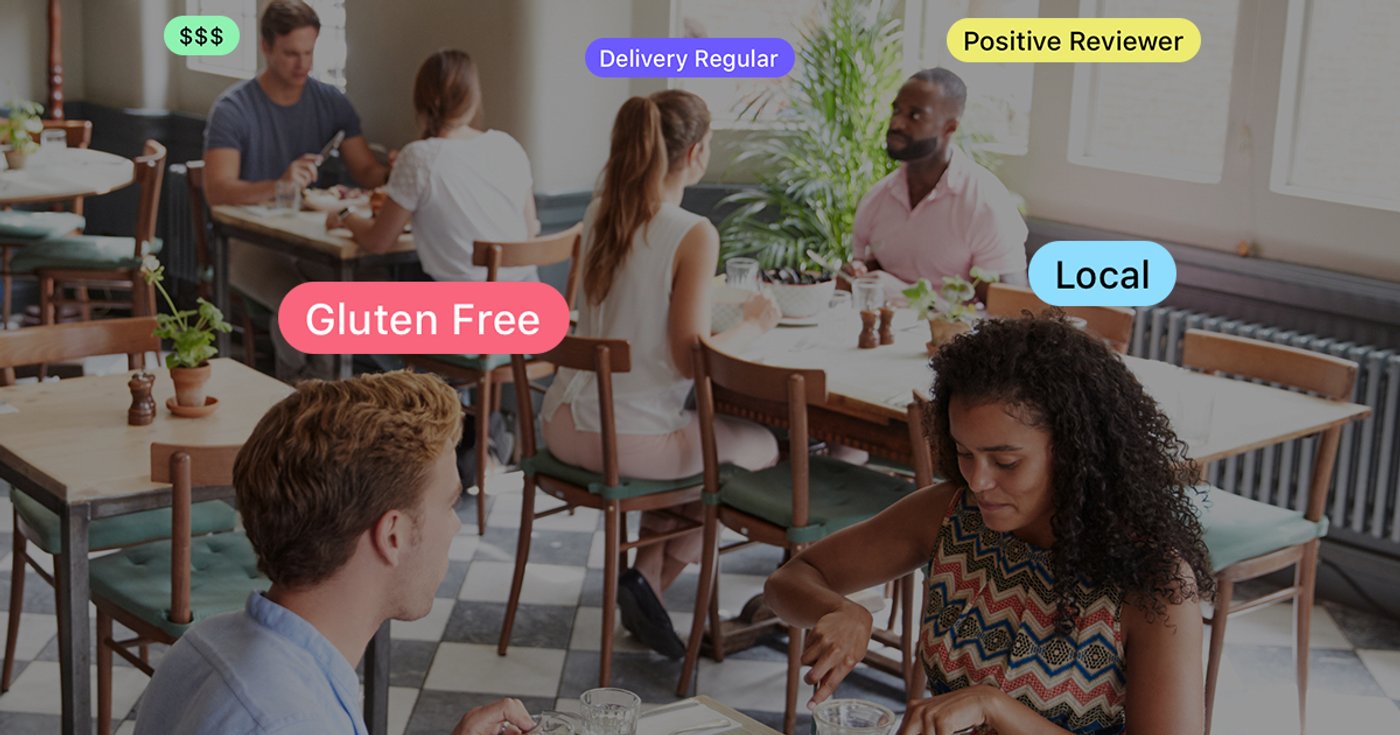
It also helps with reservation and seating arrangements (see image below), point of sale (POS) and property management systems (PMS), and automatically tagging guests according to preferences and providing upgrades or experiences according to their profiles. This software also helps Mandarin Oriental with marketing automation and engagement tools like email automation, review aggregation and special offers.
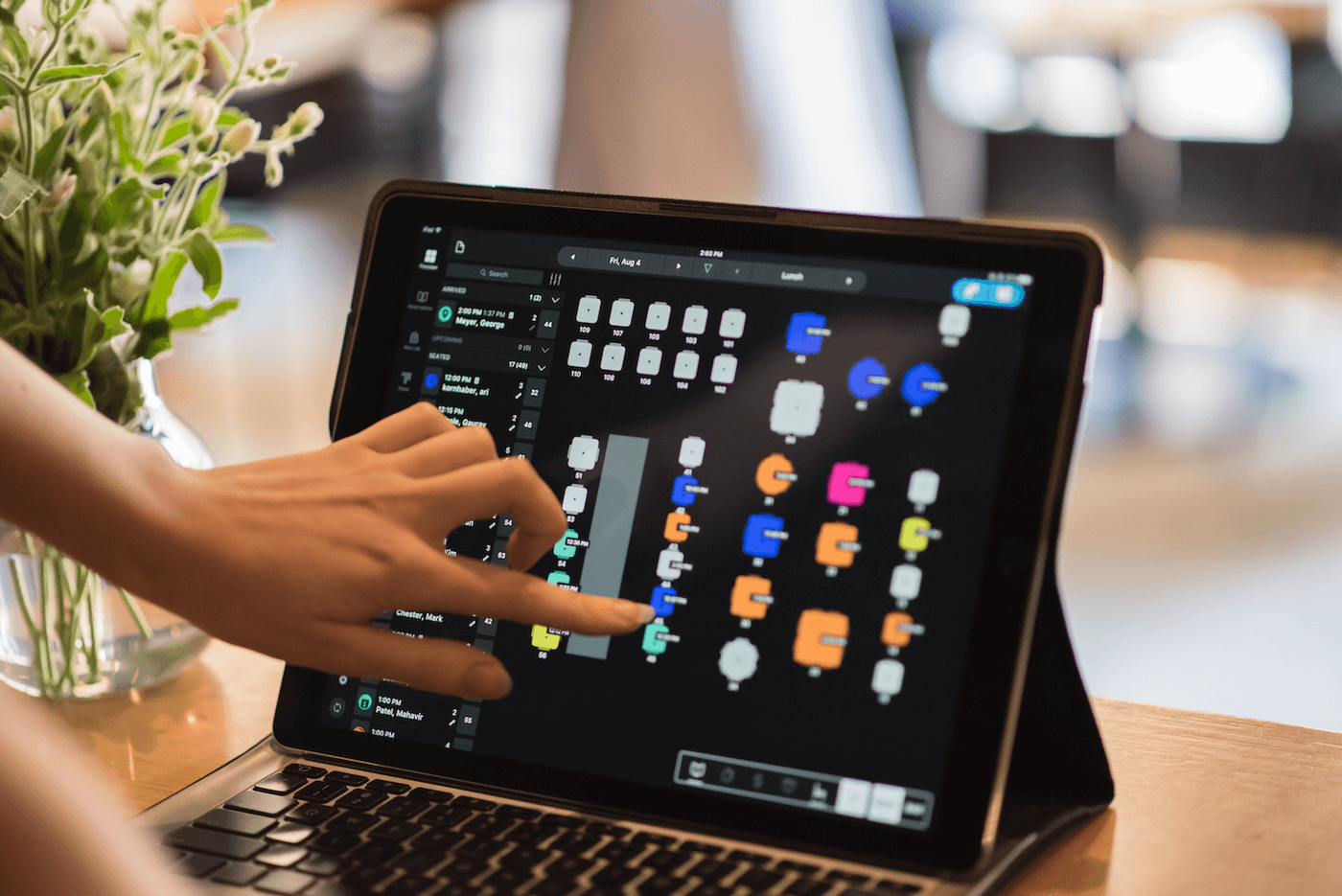
Mandarin Oriental can capture approved guest data points including personal, preference and transactional data that can then be used both in- and post-service to drive repeat visits through direct reservations across the Group. Similarly, you too can ensure that your customers delight in experiencing your product or service and come back for more. Check out how your travel business can improve customer experience here.
11. Voice Search
With Amazon Alexa, Siri, Google Home and other smart devices becoming mainstream, voice search now must be a part of your travel marketing strategy. A growing number of customers are turning to smart phones and devices to make hotel, flight, and transport bookings, using online travel agencies. Besides offering this kind of service, marketers can also optimise web content to capitalise on voice searches. Hotels are increasingly using smart hubs within their hotel rooms, improving the customer experience.
A good example of voice search in action within the travel industry is seen in this video, focused on the Expedia skill for Amazon Alexa. This provides a voice-activated means of managing your upcoming travel and booking holidays.
Check out this article to understand how you can optimise your website and content for voice search.
12. Personalised or Targeted Marketing
Personalized travel experiences are one of the most significant trends within the tourism industry, with some brands already jumping on the bandwagon. According to a report, 69% of travelers will be more loyal to a provider that personalizes their experiences. For example, check out this Hilton Hotels virtual guide, a part of the Hilton Honors application.
The app accompanies guests during their stays. It provides suggestions, recommendations, activities, resolves doubts, and more. If the guest is looking for the hotel spa, the app helps them get there, and may even send them an exclusive deal on the way. Guests can also check in using the app, control the devices that are connected to their room, and use it as a key. Not only that; app users also collect points they can share with friends or redeem on Amazon. Pretty cool right!
Personalised or targeted marketing can include AI based recommendations, targeted emails, text messages, and even remarketing campaigns. Check out this guide to travel personalisation to understand what kind of travel marketing strategies you can adopt to follow this trend.
Wrapping Up
So these were the top 12 trends you can leverage as a part of your travel marketing strategy. If you found value in this article, you definitely want to check out this ready reckoner of top video ideas that you can create in the travel space. Do share this with your friends and drop-in questions you may have on tourism marketing.
For more quick tips and hacks on editing and creating videos, subscribe to InVideo’s YouTube Channel. Finally, if you’re looking to create thumb-stopping videos in minutes (even if you’re not a PRO)- sign-up for a free account on InVideo.io today.
This post was written by Upasna and edited by Abhilash from Team InVideo


